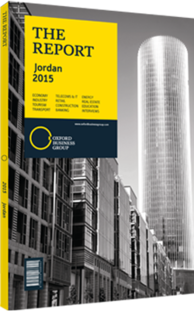Jordan 2025 economic development plan aims to revitalise the economy
The final draft of a new economic programme will set a new path for socio-economic development in Jordan, as part of a wider 10-year blueprint launched in May 2015. Jordan 2025 (also known as Vision 2025) − which was presented by King Abdullah II ibn Al Hussein and Prime Minister Abdullah Ensour − aims to revitalise the economy by targeting poverty, unemployment and the fiscal deficit, and boosting GDP growth.
Jordan 2025 will be implemented via three consecutive executive development programmes (EDPs), the first of which will run from late 2015 until end-2018. Each programme will be evaluated at the end of its three-year run to better inform the implementation of the following stage. In May 2015, the minister of planning and international cooperation, Imad Fakhoury, led a meeting of the coordination committee for preparing the 2016-18 EDP, which will include the first phase of the Jordan 2025 plan.
GDP Boost
Jordan reported annual GDP growth ranging between 2.3% and 2.8% from 2009 to 2013. Although this improved slightly in 2014, with expansion registered at 3.1%, economic pressures caused in part by disruption in gas supplies from Egypt and the influx of refugees from Syria have kept the country’s annual growth rate below the 7% target recommended by the IMF to effectively fight poverty and unemployment. Implementation of Jordan 2025, it is hoped, will help boost GDP growth rates and reduce the nation’s budget deficit, bringing about much needed improvements in the lives of Jordanians.
In July 2015 the IMF noted that fiscal consolidation is expected to help stabilise public debt for the year, thanks to lower oil prices, while the current account deficit is narrowing. Despite the significant challenges remaining, the new economic blueprint will help address these issues. “There is also a need to move on structural reforms geared to job creation, and focused on labour market reform, as well as improvements in the business climate and the quality of public institutions,” said the IMF in its review of the country. “Vision 2025 ... is an opportunity to address these challenges, and an important step will be to anchor it in a medium-term macro-fiscal framework.”
Higher Targets
Under the plan’s targeted scenario, the authorities aim to progressively boost annual GDP growth from 3.1% in 2014 to 4.9% three years later, 6.9% by 2021 and 7.5% by 2025. The plan also seeks to reduce the budget deficit to zero by 2025, from a deficit of 3.5% of GDP after grants in 2014, and thereby gradually reduce overall debt from 82.3% of GDP in 2014 to 47.4% by 2025. To achieve these targets, Jordan 2025 seeks to reverse what it describes as a recent deterioration in the nation’s competitiveness relative to other countries. It is looking to pursue an export-oriented economic strategy, primarily by boosting trade with other countries in the region, particularly the GCC states.
Cluster Approach
To bolster industrial development, Jordan 2025 adopted a cluster-focused approach that seeks to expand existing industries that are performing well, while developing related or supportive clusters complementary to those industries. The plan identifies eight clusters as having high potential for development: construction and engineering, transport and logistics, tourism and events, health care, life sciences, digital and business services, educational services and financial services. Jordan’s National Competitiveness and Innovation Committee will establish cluster coordination committees to support the development of selected sectors; committees will undertake tasks such as coordinating networking between clusters and ensuring that emerging clusters receive sufficient guidance from various educational institutions. By focusing on specific clusters, Jordan 2025 aims to modify the composition of the country’s economic output by boosting agriculture (from 2.9% to 3.4%), industry (from 22.4% to 27.4%) and construction (from 4.2% to 5.8%).
You have reached the limit of premium articles you can view for free.
Choose from the options below to purchase print or digital editions of our Reports. You can also purchase a website subscription giving you unlimited access to all of our Reports online for 12 months.
If you have already purchased this Report or have a website subscription, please login to continue.

